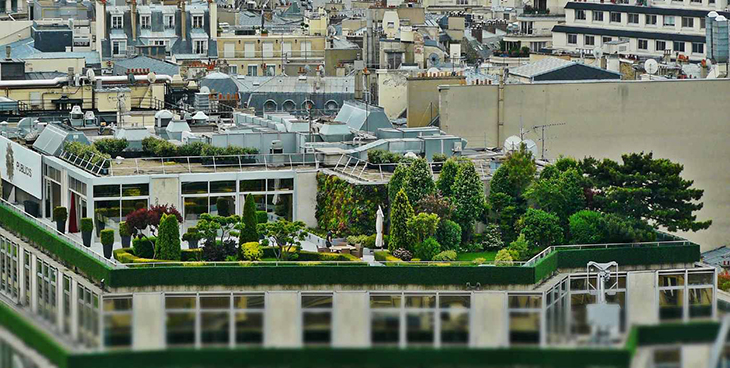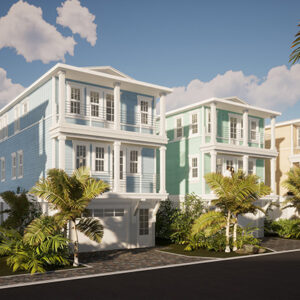
All across Europe, architects, planners, and courageous artists have been transforming boring, flat, and grey rooftops into gorgeous, lively community hubs.
From a variety of places such as art venues, solar farms, public parks, and rainwater catchments, it seems that this idea has been one of the most innovative and interesting ways to utilize tons of otherwise unused space.
The European Creative Rooftop Network (ERCN), which is leading this initiative, describes themselves as ‘a network of organizations working ‘together apart’ to use European rooftops as creatively as possible. Why? Because the future lies in this partially undiscovered layer of urban space. From the generation of new places to meet and the creation of cultural breeding grounds, to innovating living labs exploring sustainability – anything is possible.’ The hope is to connect various organization in different European cities, such as Antwerp and Barcelona, that are working to ‘aim high’ as cultural hotspots, while also creating amazing spaces and living labs that work towards sustainability.
Rotterdam, which is a city in the Netherlands, has at least 150 million square feet of unused rooftop space. The municipality’s program, called Multifunctional Rooftops, has been encouraging the city’s building owners to try and make changes to their rooftops in order to improve their water collection, or at least to “yellow” them by installing solar panels.
Very much like the High Line in New York City, the Luchtpark Hofbogen sits on top of a heritage train station, which has been converted into a rambling rooftop park.
Just this month, Multifunctional Rooftops hosted the Rotterdam Rooftop Days festival, which aims to educate people about the different possible uses for city rooftops. During the festival, they will highlight a pair of exhibits showing off public spaces on a number of different rooftops that are connected via colored bridges.
And it’s not only in areas throughout Amsterdam and nearby cities that are looking into this rooftop initiative, but other ERCN chapters include Gothenburg, Belfast, Nicosia, Faro, Chemnitz, and Antwerp.
Meanwhile in Barcelona, Spain, another group named Coincidencies is also building a network of cultural exhibition areas that will include performances areas and concert venues.
In Cyprus, Nicosia is also seeing major success in transforming their roofs into beautiful attractions. Learning Center, which is on the top of Stelios Ioannou Learning Center, which is turf roof that provide a 360-degree vision of the city. At the very center, there’s an artificial hill that provides a skylight into the library seen below.
A rooftop cultural space named 1010 Hall, which has a focus on stargazing – not necessarily because of the number of stars in Nicosia, but due to the huge telescope on the roof that highlights stargazing. There are also a number of talks on stargazing and astronomy that are hosted within the small theater located there.
A New Hope
For individuals that would like to know where they see these revamped rooftops, all they need to do is look at ERCN’s “Rooftopedia,” which is a link that puts them all together to help customers decide where they should go.
When it comes to Rotterdam, the decision to convert rooftops into community hubs is also a conscious effort to keep the city “above water,” as around 90% of the municipality is basically below sea level. This is also the reason why there is a strong emphasis on water collection. This actually began back in 2008 when it became the first city to offer subsidies to those building owners willing to construct green roofs on their locations.
One year later, the roof of the 1960’s concert hall called The De Doelen, was finished being installed with a gorgeous roof upgrade that included hidden water tanks beneath stones, which paved a walkway that managed to collect at least 2,000 bathtubs of water.
People may not realize just how much of a large role these bare roofs of dark-grey concrete play in the “heat island” effect of cities. And the more things they place up there to absorb the heat also means less energy that the building will need to cool itself down. This whole “rooftop community hubs” can truly be called the next revolution when it comes to urban planning.
What are your thoughts? Please comment below and share this news!
True Activist / Report a typo


